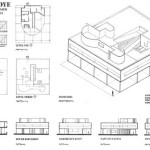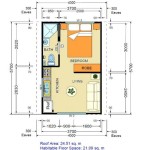Essential Aspects of Wooden Bat House Plans
Bat houses provide a safe and sheltered environment for bats, which are beneficial animals that play a crucial role in insect control and pollination. Building a wooden bat house is a rewarding project that can help support bat populations in your area.
When designing and constructing a wooden bat house, there are several essential aspects to consider:
1. Location and Placement
Bats prefer to roost in warm, sunny areas that are protected from wind and rain. Choose a location that receives at least 6 hours of direct sunlight per day and is at least 10 feet above the ground. Ensure the bat house is facing away from prevailing winds and is not obstructed by trees or other structures.
2. Size and Design
The size and design of the bat house will depend on the species of bats you are trying to attract. Generally, larger bat houses can accommodate more bats, but smaller houses may be more accessible to smaller bat species. A typical bat house should be at least 24 inches tall, 14 inches wide, and 3 inches deep, with a 3/4-inch entrance hole located near the bottom.
3. Materials
The best materials for building a wooden bat house are untreated, weather-resistant woods, such as cedar, redwood, or cypress. Avoid using treated wood or plywood, as these materials can release harmful chemicals that can be toxic to bats.
4. Ventilation and Drainage
Bats require good ventilation to avoid overheating and moisture build-up. Ensure there are ventilation holes or slots near the top of the bat house, allowing air to circulate. Additionally, the bat house should have drainage holes or slits near the bottom to prevent water from accumulating, which can lead to mold or mildew.
5. Roosting Chambers
Bats need a space to roost and raise their young. Divide the interior of the bat house into several roosting chambers using plywood or wooden strips. The chambers should be at least 3 inches wide and 5 inches tall, with a rough surface for bats to grip onto.
6. Landing Platform
Provide a landing platform or apron in front of the entrance hole to give bats a place to land and climb into the bat house. The landing platform should be at least 4 inches wide and extend 2-3 inches below the entrance hole.
7. Painting and Staining
Avoid painting or staining the exterior of the bat house, as this can block ventilation and create a less attractive roosting environment for bats. If desired, you can apply a clear sealant to protect the wood from weathering.
8. Monitoring and Maintenance
Once the bat house is installed, monitor it regularly for activity. Signs of bat use include guano (bat droppings) on the landing platform or inside the house. Inspect the bat house annually and perform any necessary maintenance, such as cleaning out guano or repairing any damage.

Bat House Plans Bird

Bat Houses Mass Gov

Bat House Plans Diy

How To Build A Bat House Lee Valley Tools

Bathouse

How To Build A Bat Box With Diy Instructions Gardener S Path

I Need A Bat House Build Plans

Wooden Bat Boxes Conservation Trust

How To Build A Bat House Lee Valley Tools

20 Diy Bat Box Plans Crafts








